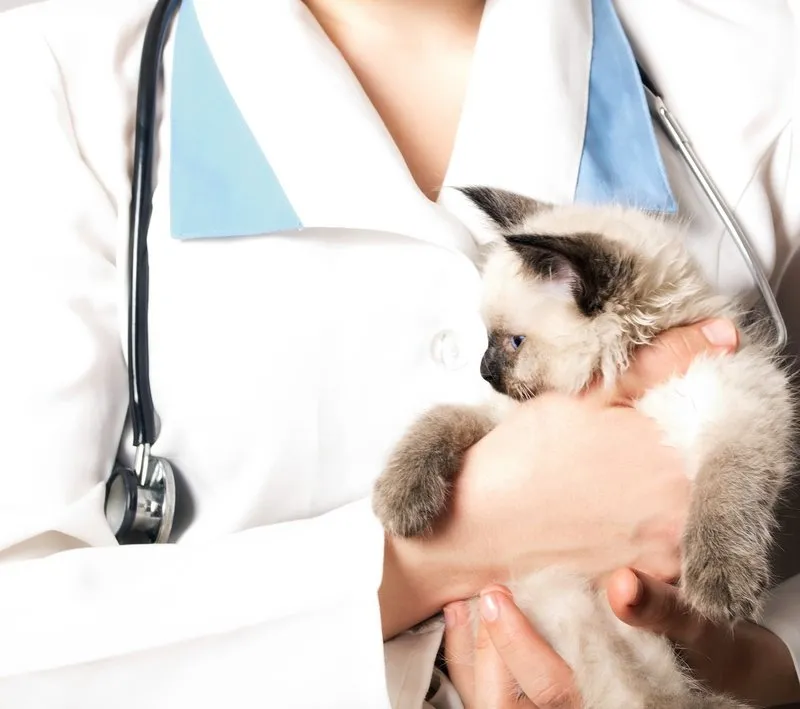Cats are mysterious creatures, and one of the most intriguing conditions they can develop is Feline Hyperesthesia Syndrome, also known as rolling skin syndrome. This fascinating but often misunderstood condition is characterized by unusual signs such as twitching skin, excessive meowing, and sudden bouts of hyperactivity. In this article, a local vet shares crucial insights into identifying and managing feline hyperesthesia syndrome. Discover the causes, risks, and treatments available for this condition, ensuring your feline friend lives a happy, stress-free life. Whether you’re a seasoned cat owner or new to feline companionship, this article provides valuable information to help you understand and care for your beloved pet.
Feline hyperesthesia syndrome, also known as rolling skin syndrome and twitchy cat disease, is a rather unique issue that we sometimes see in our feline friends. The condition is characterized by hypersensitivity of the skin, usually on the back. A local vet offers some information in this article.
Signs
Fluffy can’t tell you what is going on with her, so you need to know what to look for. You may see twitching or rippling skin on your pet’s back. Other red flags include dilated pupils, excessive and/or unusual meowing, jumping and running frantically, drooling, tail chasing, scratching, and excessive sleepiness. Your kitty may also bite or lick herself, particularly on her flanks, lower back, rear paws, bottom, and/or tail. She may also seem to feel discomfort or pain when being petted or held. Contact your vet if you notice any of these issues in your feline buddy.
Causes
There are actually many potential causes of feline hyperesthesia syndrome. Skin problems, such as allergies, are one of the most common ones. However, it can also be caused by neurological issues, such as seizures or nerve pain. It may be sometimes a psychological issue, as it has been linked to compulsive behavior, anxiety, stress, and even attention seeking. Food sensitivity is another potential culprit. Given that stress is a significant factor, it’s important to recognize the signs of stress in your cat. For more information on this topic, check out our article on How to Tell If Your Cat Is Stressed-Out.
Risks
Feline hyperesthesia is most common in cats that are younger than seven years old. However, the average age at onset is just one year old. Breed may also play a role. For instance, Abyssinian, Burmese, Persian, and Siamese kitties are particularly prone to this condition.
Treatment
While feline hyperesthesia syndrome isn’t fatal, it can still affect Fluffy’s quality of life. If you know or suspect that your kitty is afflicted, contact your vet immediately. A mild case can be scheduled as an appointment. However, severe episodes would warrant immediate emergency care.
The good news is that there are treatments available. Your vet will need to do some tests to determine if Fluffy does have feline hyperesthesia syndrome. It’s also important to identify and rule out other issues, as several medical conditions can cause similar problems. These include parasites, allergies, spinal arthritis, intervertebral disc extrusions, skin problems, and fungal infections. As far as treatment, medication is often successful, though some cats respond differently than others. Your vet may also recommend behavioral counseling and/or environmental changes.
Feline Hyperesthesia Syndrome in 2025: Diagnosis and Treatment Options
What is the typical age range for cats affected by this condition?
TFeline hyperesthesia syndrome commonly affects younger cats, typically seen in those under seven years old. The average age when symptoms first appear is around one year. Certain breeds like Abyssinians, Burmese, Persians, and Siamese are more susceptible to developing this condition. Early detection and treatment are crucial to manage the symptoms effectively and ensure the quality of life for affected cats. If you notice any concerning symptoms, it’s advisable to consult a veterinarian promptly for a thorough evaluation and appropriate management.
Are there any specific cat breeds more prone to this condition?
Yes, certain cat breeds show a higher predisposition to feline hyperesthesia syndrome. Breeds such as Abyssinians, Burmese, Persians, and Siamese are particularly prone to this condition. This vulnerability may be due to genetic factors or specific breed characteristics. However, it’s essential for all cat owners, regardless of breed, to be aware of the symptoms and seek veterinary advice if they notice signs of the syndrome in their pets to ensure proper management and care.
How is feline hyperesthesia diagnosed?
Feline hyperesthesia syndrome is diagnosed primarily through observation of symptoms and the exclusion of other medical conditions. Veterinarians look for signs such as skin twitching, unusual vocalizations, and erratic behavior. Diagnostic tests might include skin biopsies, blood tests, and neurological exams to rule out allergies, infections, and neurological disorders. It’s crucial to differentiate these symptoms from those of other diseases that can present similarly, ensuring a correct diagnosis and appropriate treatment strategy.
What are some specific medications used to treat the condition?
Feline hyperesthesia syndrome, while not fatal, can significantly disrupt a cat’s quality of life. Treatment typically involves medications aimed at alleviating the symptoms associated with the condition. Common pharmacological interventions include anti-seizure medications, such as phenobarbital or gabapentin, which help manage neurological symptoms. Additionally, anti-anxiety drugs, like amitriptyline or fluoxetine, may be prescribed to address behavioral issues stemming from or exacerbating the syndrome. It’s crucial to work closely with a veterinarian to tailor treatment to the specific needs of the affected cat, ensuring the best possible outcome.
Are there any alternative therapies that might help?
Alternative therapies may help manage Feline Hyperesthesia Syndrome (FHS) symptoms alongside conventional treatments. Environmental enrichment, such as interactive toys and climbing structures, can reduce stress levels and provide mental stimulation, potentially alleviating symptoms. Pheromone diffusers like Feliway can promote relaxation and reduce anxiety-related behaviors. Acupuncture and chiropractic treatments have shown promise in some cases by targeting nerve-related issues and promoting overall wellness. Nutritional support, including Omega-3 fatty acids, can reduce inflammation and improve skin health. Always consult a veterinarian before starting any alternative therapies to ensure they are appropriate for your cat’s condition.
Do you have questions about your kitty’s health or care? Our Pet Allergies & Vet Dermatology service can help diagnose and treat skin-related issues that may be contributing to feline hyperesthesia syndrome. Our specialists can provide comprehensive care for allergies, skin conditions, and other dermatological concerns that might be affecting your cat. Contact us, your local animal clinic in Waterdown, ON, to schedule a consultation and get expert care for your feline friend!




!Social Media Icons